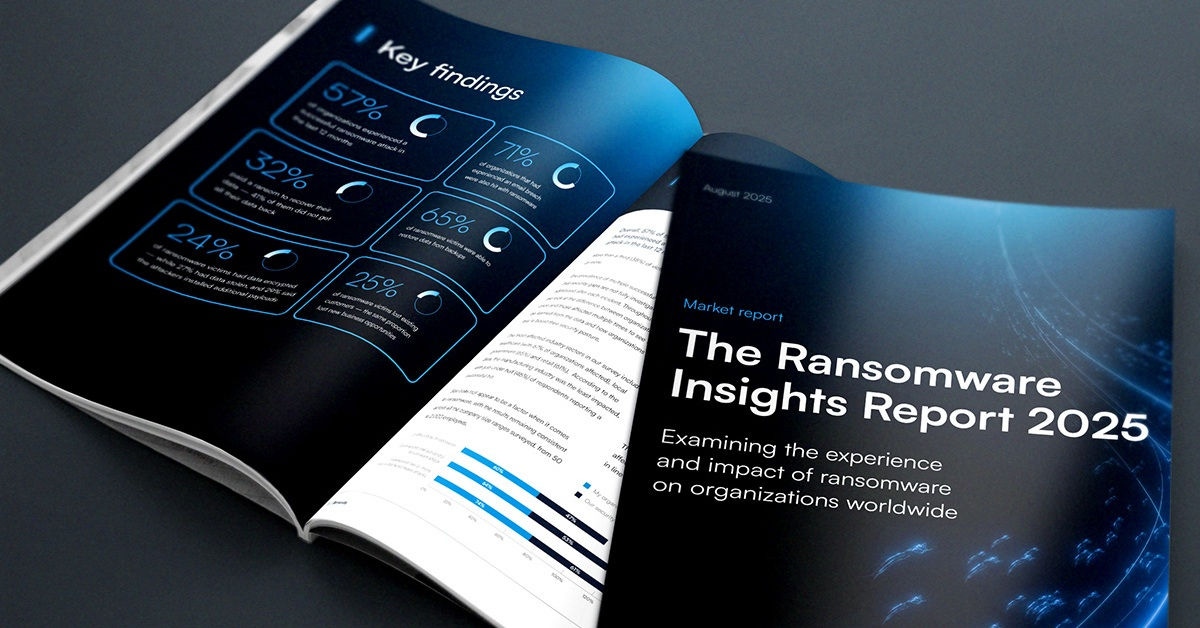
Por qué las API zombis son una bomba de tiempo para su negocio
En esta serie, examinamos los desafíos y oportunidades de seguridad que enfrentan las interfaces de programación de aplicaciones (APIs). Este artículo considera las API zombis, mientras que los artículos complementarios examinarán el potencial de seguridad de los identificadores de sesión y cómo gestionar el ciclo de lanzamiento de las API.
La amenaza silenciosa de las API zombis
En el mundo interconectado de hoy, las API son el pilar del software moderno. Permiten que las aplicaciones se comuniquen entre sí y compartan datos sin problemas, impulsando todo, desde aplicaciones móviles hasta sistemas empresariales complejos.
Aunque a menudo nos centramos en la seguridad de las API activas y bien mantenidas, una amenaza silenciosa acecha en las sombras: las API zombis. Estas son las API olvidadas, obsoletas y, a menudo, indocumentadas, y representan un riesgo de seguridad significativo, ya que actúan como puntos de entrada ocultos para los atacantes y ponen en peligro todo su ecosistema digital.
¿Qué son las APIs zombis?
Las API zombis son APIs que ya no se utilizan, mantienen o documentan adecuadamente de forma activa, pero que siguen siendo funcionales (o parcialmente funcionales) y accesibles. Son como servidores olvidados o aplicaciones abandonadas: siguen en funcionamiento, pero están descuidados y son vulnerables. Estos fantasmas digitales pueden surgir por diversas razones:
- Deprecación sin desmantelamiento: Las funciones a menudo se quedan obsoletas, pero las API correspondientes siguen operativas, lo que crea un caldo de cultivo para las vulnerabilidades.
- Falta de gestión del ciclo de vida de las API: Sin un proceso claro para retirar las API, estas pueden permanecer mucho después de que su utilidad haya caducado.
- TI en la sombra: Los desarrolladores pueden crear API para proyectos específicos sin la debida autorización o documentación, lo que lleva a que las API queden huérfanas.
- Fusiones y adquisiciones: La integración de sistemas de diferentes empresas puede resultar en un cementerio de APIs olvidadas de las entidades adquiridas.
- Documentación deficiente: Incluso si una API no se abandona intencionadamente, una documentación inadecuada puede dificultar la comprensión de su propósito o estado, convirtiéndola efectivamente en un zombi.
Los peligros de los no-muertos
Las API zombis presentan una multitud de riesgos de seguridad:
- Puntos críticos de vulnerabilidad: A falta de parches de mantenimiento y seguridad, las API zombis se convierten en objetivos fáciles para los atacantes. Las vulnerabilidades conocidas permanecen sin ser abordadas, creando brechas en las defensas.
- Violaciones de datos: Aprovechar las vulnerabilidades en las API zombis puede otorgar a los atacantes acceso a datos sensibles, lo que lleva a costosas violaciones de datos y daños reputacionales.
- Pesadillas de cumplimiento normativo: es poco probable que las API obsoletas cumplan con los estándares actuales de seguridad y cumplimiento normativo, exponiendo a las organizaciones a posibles multas y repercusiones legales.
- Disrupción operativa: Una API zombi comprometida puede interrumpir las operaciones empresariales, afectando a los servicios críticos y la experiencia del cliente.
- Superficie de ataque ampliada: cada API activa (y especialmente inactiva) amplía su superficie de ataque. Las APIs zombis aumentan significativamente esta superficie, proporcionando más oportunidades para los actores malicioso/a.
Revitalizar las API
La clave para mitigar los riesgos de las API zombis radica en la gestión proactiva de las API:
1. Descubrimiento de API:
Analice regularmente su entorno para identificar todas las API, incluidas aquellas que puedan estar olvidadas o no documentadas. Las herramientas automatizadas pueden asistir en este proceso.
2. Gestión robusta del ciclo de vida de las API:
Implemente un ciclo de vida claro y completo para sus API, desde el diseño y desarrollo hasta el despliegue, mantenimiento y eventual retirada.
3. Retiro adecuado de la API:
Cuando una API ya no sea necesaria, retírela adecuadamente. Esto implica un proceso estructurado. Aquí tiene un desglose con ejemplos:
- Notificación: Informe a los usuarios sobre la desactivación de la API y proporcione orientación para la migración.
- Período de obsolescencia: Permita tiempo suficiente para que los usuarios realicen la transición a un nuevo sistema antes de retirar completamente la API. Es recomendable añadir una cabecera 'sunset' a un HTTP para informar proactivamente a los clientes de que un recurso dejará de estar disponible en un momento específico en el futuro.
- Actualizaciones de la documentación: Marque claramente la API como obsoleta en su documentación.
- Redirección de tráfico (si corresponde): Redirija el tráfico a una API de reemplazo si existe.
- Desmantelamiento: elimine la API de su entorno de producción. Esto implica eliminar el código de API de los servidores, borrar cualquier base de datos o componente de infraestructura asociado, y deshabilitar cualquier control de acceso o clave de API asociado con la API desmantelada.
- Monitorización: Supervise cualquier tráfico residual o dependencias incluso después de la desactivación.
4. Escaneo de vulnerabilidades y pruebas de penetración
Escanee regularmente todas las API, incluidas aquellas sospechosas de ser zombis, para detectar vulnerabilidades. Las pruebas de penetración pueden ayudar a identificar debilidades que los análisis automatizados podrían pasar por alto.
5. La documentación de la API es crucial.
Mantenga una documentación precisa y actualizada para todas las API. Esto incluye su propósito, estado y uso previsto.
6. Prácticas recomendadas de seguridad
Implemente prácticas de seguridad robustas para todas las API, incluidas la autenticación, la autorización, la limitación de velocidad y la validación de entradas.
Conclusión
Las API zombis son una amenaza silenciosa pero potente para la seguridad de su organización. Ignorar estos fantasmas digitales puede tener graves consecuencias. Al implementar un enfoque proactivo en la gestión de las API, incluidos los procesos adecuados de retirada de las API, puede minimizar los riesgos y proteger su empresa de amenazas persistentes. No permita que sus API se conviertan en zombis: tome el control de su ciclo de vida y asegúrese de que estén sirviendo activamente a sus necesidades o descansando de forma segura.
Para obtener más información, visite nuestro sitio web.
Nota: Este artículo fue publicado originalmente en LinkedIn.

Informe de Barracuda sobre Ransomware 2025
Principales conclusiones sobre la experiencia y el impacto del ransomware en las organizaciones de todo el mundo
Suscríbase al blog de Barracuda.
Regístrese para recibir Threat Spotlight, comentarios de la industria y más.

Seguridad de vulnerabilidades gestionada: corrección más rápida, menos riesgos, cumplimiento normativo más fácil
Descubra lo fácil que es encontrar las vulnerabilidades que los ciberdelincuentes quieren explotar.





